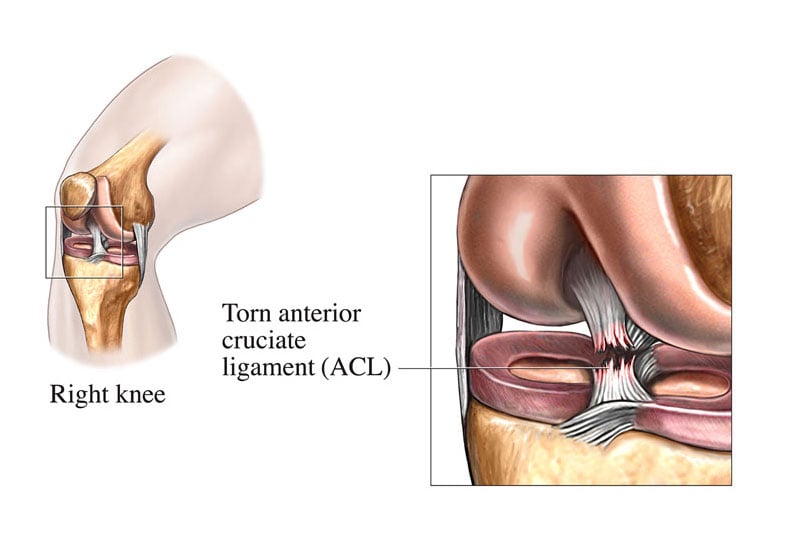Anterior cruciate ligament tears:
Tears to the anterior cruciate ligament (ACL) are not uncommon. They can occur in sports players where there is a sudden change in direction (i.e. football). Likewise, they can occur in the general population, specifically when the lower leg extends forward too much or the knee rotates inwards under load.

Subjective History:
At the time of injury the patient will often describe hearing an audible ‘pop’, ‘crack’ or feeling of the knee giving way
Acute initial onset of pain and the development of a haemarthrosis within a few hours of the injury
Initially, the patient will have difficulty weight bearing
Objective Examination:
On examination there will be restriction of movement, especially loss of extension and widespread mild tenderness. Difficulty with walking and turning on the spot.
The Lachmann’s test is positive in ACL disruption and is the most useful test for this condition.
Deciding to have Surgery
The decision to refer patients for an orthopaedic review for consideration of knee surgery will depend on the extent of damage to the ACL and whether it is affecting quality of life. If the knee does not feel unstable and the patient does not have an active lifestyle, they may not require surgery. You can refer to Physiotherapy on the acute knee pathway and the patient will be seen within 72 hours (West Suffolk CCG only).
References
Image from OpenI – Licensed by CC
Image from OpenI – Licensed by CC
Image from OpenI – Licensed by CC
Treatment:
Initial management should involve protection, rest, ice, compression and elevation (PRICE), issue of crutches.
Painful activities should be avoided
Progressive loading of the knee through active rehabilitation
The treatment regimen can be summarised as follows:
0-48 hrs:
PRICE
Active pain-free exercises (gentle range of movement)
After the first 48 hrs:
Gradually increase strength:
Active knee flexion and extension
Knee brace, active single leg raise and inner range quads.
Hamstring and gluteal strengthening
Progress loading – Chair/wall squats and stair step-ups
Knee stability exercises (e.g. pulleys with other leg, one-leg squats)
Low impact cardio, cycling and swimming, lower limb strengthening exercises if access to a gym
Functional Strengthening:
Bike
Pool running
Jogging
Swimming
Sport Specific skills:
Jumping and landing
Running-straight line
Running-figure of eight
Rapid changes of direction (cutting drills)
Kicking-gradual increase
References
Image from OpenI – Licensed by CC
Image from OpenI – Licensed by CC
Image from OpenI – Licensed by CC